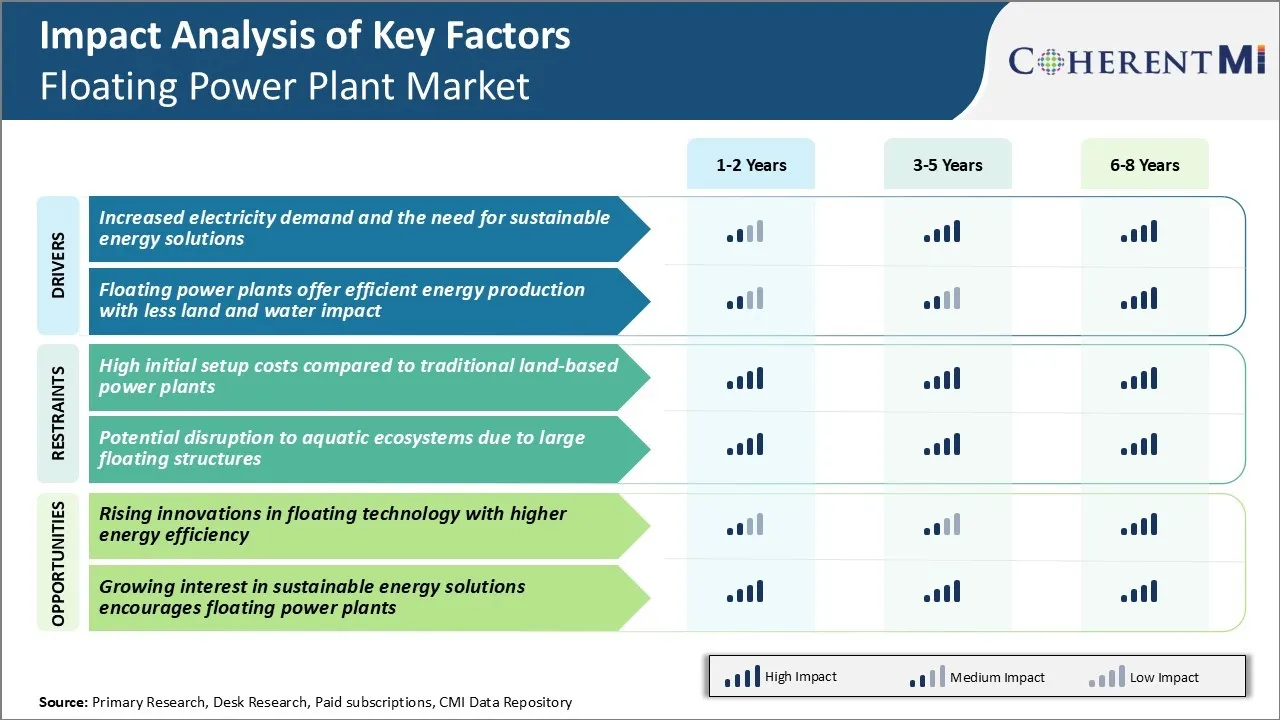Floating Power Plant Market Trends
Market Driver - Increased Electricity Demand and the Need for Sustainable Energy Solutions
Many countries across the world are facing chronic power shortages and regular blackouts due to insufficient power generation capabilities to meet rising consumption levels. There is also a growing global push for transitioning to cleaner and renewable sources of energy to reduce carbon emissions and tackle climate change.
Floating power plants have emerged as a promising solution that can help tackle both these challenges of growing electricity demand as well as the need for sustainable energy alternatives. By being located off the coasts and on seas, floating power plants do not require any valuable land area. The modular design also enables easier replication and scalability based on evolving demand patterns.
In addition, floating solar and wind power plants offer carbon-free means of electricity production. The offshore winds are much stronger and more consistent compared to onshore locations, making wind energy highly viable. As more nations aspire to reduce their carbon footprint and transition towards renewable energy, floating power plant market will experience heightened growth in coming years.
Market Driver - Floating Power Plants Offer Efficient Energy Production with Less Land and Water Impact
In contrast to conventional alternatives, floating power plants minimize the requirement of precious natural resources like land and freshwater bodies. These also require a steady supply of cooling water which is withdrawn in large volumes from rivers, lakes or seas and returned at higher temperatures. Some coal or nuclear plants are even abandoned or decommissioned when nearby water resources get depleted or polluted over long-term operations.
On the other hand, floating solar, wind and wave power stations located offshore or in reservoirs, bays and backwaters utilize only the water surface area and water currents/waves without altering land parcels or hydrological characteristics. They consume negligible amounts of water for operations and no water is returned, preventing thermal pollution issues.
Overall, floating facilities harness abundant offshore wind, solar, hydro, or wave resources more efficiently with minimal pressures on land or water. This is expected to boost growth of the floating power plant market.

Market Challenge - High Initial Setup Costs Compared to Traditional Land-Based Power Plants
One of the key challenges currently faced by the floating power plant market is the high initial setup costs compared to traditional land-based power plants. Developing a floating power plant requires the construction of a specialized floating vessel that can house all the necessary power generation equipment while also being able to withstand harsh marine environments.
Additionally, floating power plants also require marine equipment like anchoring systems, ballast systems, sea fastening etc. to ensure the floating platform remains stable in open waters. All these additional infrastructure and specialized equipment needed for a floating design pushes the initial capital expenditure much higher than conventional power projects on land.
Estimates suggest the setup costs for floating solutions can be 20-30% higher than similar capacity land-based facilities. The high upfront investment poses serious entry barriers for project developers and makes floating options less attractive economically.
Market Opportunity - Rising Innovations in Floating Technology with Higher Energy Efficiency
One of the major opportunities for the floating power plant market is the rising innovations in floating technology which can help improve energy efficiency. The concept of floating power generation is gaining more traction globally. So, technology providers are constantly working on innovative designs that can optimally harness renewable resources like solar, wind, wave etc. in offshore and remote locations.
Novel floating platforms are being developed which are more sturdy, compact and tailored to diverse marine conditions. Advanced technologies like modular construction techniques are also helping lower installation times and costs.
Similarly, the use of smart sensors and automation solutions in floating assets is improving overall operational efficiency. The evolving technology innovations are expected to gradually shrink the cost discrepancy with conventional power plants. The rising R&D efforts thus provide a strong opportunity to make floating power generation more competitive and scale up its adoption worldwide.